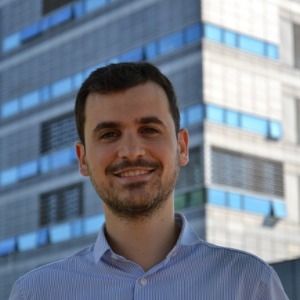Sep 14, 2020
Nuclei isolation from snap frozen human pancreatic tissue using a citric acid buffer
- 1Charité Universitätmedizin Berlin/BIH;
- 2Digital Health Center at BIH/Charité
- The Single Cell Ninjas

Protocol Citation: Luca Tosti, Christian Conrad 2020. Nuclei isolation from snap frozen human pancreatic tissue using a citric acid buffer. protocols.io https://dx.doi.org/10.17504/protocols.io.tpxempn
Manuscript citation:
https://www.biorxiv.org/content/10.1101/733964v1
License: This is an open access protocol distributed under the terms of the Creative Commons Attribution License, which permits unrestricted use, distribution, and reproduction in any medium, provided the original author and source are credited
Protocol status: Working
We use this protocol and it works for us in different human frozen tissues such as pancreas, lung, brain.
Created: September 18, 2018
Last Modified: September 14, 2020
Protocol Integer ID: 15831
Keywords: single-cell RNA-seq, sNuc-RNA-seq, citric acid buffer, snATAC-seq
Abstract
A protocol to isolate nuclei from snap-frozen pancreatic tissue and protect RNA from RNAse-mediated degradation
Materials
MATERIALS
DTTMerck MilliporeSigma (Sigma-Aldrich)Catalog #D0632
citric acid monohydrateMerck MilliporeSigma (Sigma-Aldrich)Catalog #33114
SucroseMerck MilliporeSigma (Sigma-Aldrich)Catalog #S7903
Dounce homogenizers Merck MilliporeSigma (Sigma-Aldrich)Catalog #D8938-1SET
RNase Inhibitor (40 U/μL)Takara Bio Inc.Catalog #634888
Falcon® 5 mL Round Bottom Polystyrene Test Tube, with Cell Strainer Snap CapCorningCatalog #352235
Countess™ Cell Counting Chamber SlidesCatalog #C10314
1M MgCl2AmbionCatalog #AM9530G
Nuclease-Free WaterThermo Fisher ScientificCatalog # AM9939
SUPERase• In™ RNase Inhibitor (20 U/μL)Thermo Fisher ScientificCatalog #cat# AM2694
KCl 2MCatalog #AM9640G
Tris buffer solution pH 75 (1 mol/l) Ultrapure GradeVWR International (Avantor)
Hoechst 33258Thermo Fisher ScientificCatalog #H3569
Countess II Automated Cell CounterThermo Fisher ScientificCatalog #AMQAX1000
Before start
- Cool down table-top centrifuge to 4°C.
- Place douncers and pestles on ice/in a fridge to cool them down 0-4°C.
- Prepare the following buffers and keep them on ice:
S25
Reagent Amount (μL)
Sucrose 1.5M 500.00
Citric Acid 250mM 300.00
Hoechst 3.00
Nuclease-free H2O 2197.00
TOTAL 3000.00
S88
Reagent Amount (μL)
Sucrose 1.5M 1000.00
Citric Acid 250mM 170.00
Nuclease-free H2O 530.00
TOTAL 1700.00
Resuspension Buffer
Reagent Amount (μL)
KCl 2M 12.50
MgCl2 1M 3.00
Tris-buffer pH=7.5 1M 50.00
RNaseIn 40U/μL 10.00
DTT (1M) 1.00
SuperaseIn 20U/μL 20.00
Hoechst 1.00
Nuclease-free H2O 902.50
TOTAL 1,000.00
Add 1 mL of cold S25 buffer to the douncer placed on ice
1 mL S25 buffer
Transfer the tissue in the douncer, crush it with one stroke of the loose pestle and dislodge the tissue from the bottom using a P200 tip if necessary
Incubate the tissue for 5 min on ice
4 °C on ice
00:05:00 incubation
Crush the tissue with 5 more strokes of the loose pestle and leave to incubate for 5 minutes
4 °C on ice
00:05:00 incubation
Homogenize the tissue with 3 more strokes of the loose pestle and 5 more strokes with the tight pestle
Filter through a FACS-tube with cell strainer cap (35 μm)
Wash filter with 250 μL of S25 buffer
250 µL S25 buffer
Transfer the nuclei suspension to a 1.5 mL eppendorf tube and centrifuge at 4°C, 500g for 5 minutes
00:05:00 centrifugation
Note
You will probably not see the pellet, but nuclei are on the wall of the tube! Be careful when aspirating, leave a few μL of liquid at the bottom in the next step!
Resuspend the nuclei in 1 mL of S25 buffer and repeat the centrifugation step as in step 8.
1 mL S25 buffer
00:05:00 centrifugation
Carefully remove the supernatant, resuspend in 300 μL S25 buffer and load 10 μL of nuclei suspension in a Countess™ Cell Counting Chamber Slide. Count the Hoechst-positive nuclei. Use the brightfield to evaluate the amount of debris present in the suspension and the overall integrity of the nuclei. For an example of Countess images, please see the expected results in Step 13.
300 µL S25 buffer
High amount of debris4 steps
If you can see high amount of debris (small fragments in the brightfield view, Hoechst-negative), you can perform a density centrifugation step as described here:
- Go at the bottom of the nuclei suspension and gently add 1 volume (300 μL) of S88 buffer.
- Centrifuge at 4°C, 1,000g for 10 minutes.
- Remove the supernatant - careful not not aspirate nuclei, better to leave a few microliters at the bottom!
- Resuspend in 300 μL of S25 buffer and check again on the Countess - you should now have a cleaner suspension!
- Proceed to Step 10
300 µL S88 buffer
300 µL S25 buffer
00:10:00 centrifugation
go here 10
Centrifuge the nuclei at 4°C, 500g for 5 minutes
00:05:00 centrifugation
Resuspend in appropriate volume of Resuspension Buffer. The volume can be determined based on the desired final concentration; 20% of the nuclei might be lost during the previous centrifugation step.
Count nuclei and proceed with FACS sorting of the nuclei or directly to the encapsulation in oil droplets.
Expected result
Fig. 1: Representative images of bright-field (A), DAPI (B) and merged (C) fields of human pancreas nuclei isolated with the citric acid protocol. Notably, clumps of nuclei are almost completely absent when using this protocol.
